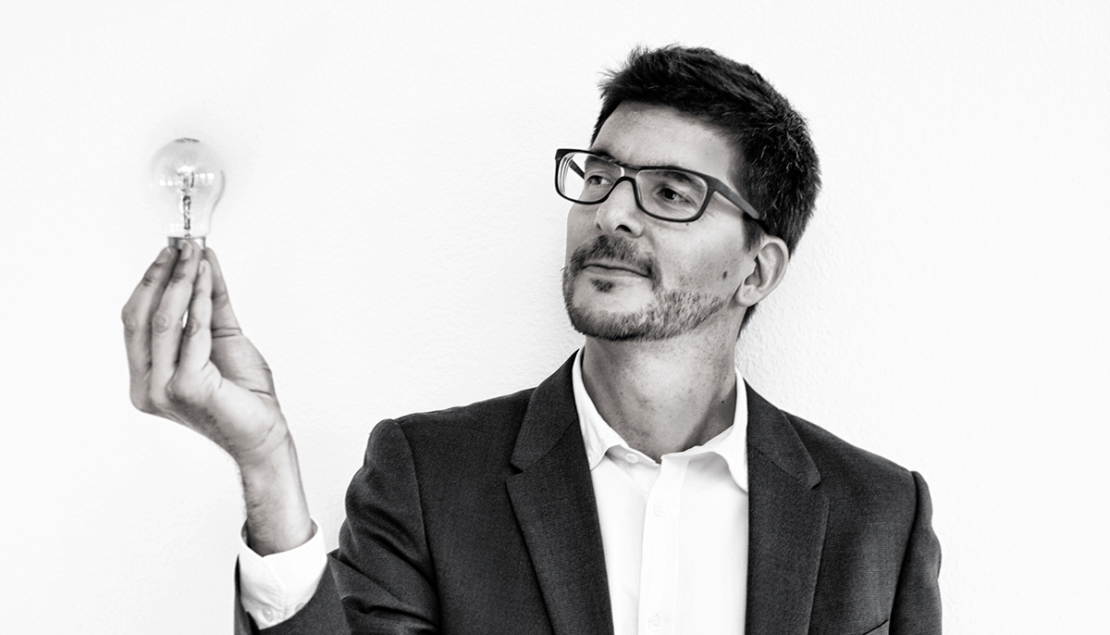14Nov2017
The Swiss entrepreneur and author wants to make strategy and entrepreneurship practical, simple and relevant.
While the focus of business is still firmly on the bottom line, the markets of the 21st century have turned many old conventions of successful business on their heads. The absence of profits, or sometimes even revenue, haven’t stood in the way of Instagram becoming a billion dollar acquisition, Snapchat going public, or Amazon running towards becoming the world’s most valuable company. In the middle of the new business model bonanza stands Alex Osterwalder. The Swiss entrepreneur and author, whose interests stem from political science, is today considered one of the world’s foremost authorities on business models and value proposition design.
“Political Science is not too far from business models. Companies are institutions, and institutions are the way they are because we make them the way they are. So, by learning Political Science, I learned how institutions become what they are. It’s an interesting foundation to think about how business is the way it is,” he says.
Visual tools make a difference
After earning his PhD in 2004 and working on business models with Professor Yves Pigneur, Osterwalder’s breakthrough in the business world came in 2010 when his strategic planning tool, The Business Model Canvas, took off. The visual chart, helping organizations sketch out their current business model or design new ones, was especially embraced by startups in search of more nimble ways to document their business plans.
Today, the Business Model Canvas is used by millions of people, from startup entrepreneurs to large company CEOs. “We knew it worked, but the fact that it spread so much is a great satisfaction,” Osterwalder says, feeling happy to see so many companies take advantage of his invention.
With over 6,000 books listed on Amazon under strategy & competition, the appeal of Osterwalder and Pigneur’s book Business Model Generation – which contains the Business Model Canvas and guidance on how to make the most out of it – is its easy use and universal applicability.
According to Osterwalder, their goal was to make everything extremely practical, intuitive, and simple: “When we designed the Business Model Canvas, we even did some research to understand why it did really work. It’s because it is visual, intuitive, practical, and creates a shared language and a better conversation.“
As a firm believer in the freemium model, Osterwalder made the Business Model Canvas available to download under a creative commons license. “Consulting firms, traditionally, don’t give their tools away because they want to make money. In our case it’s different. We want people to use them because we want them to do a better job. We earn money in a different way,” he says.
Complementing each other’s work, Osterwalder’s name is often brought up in conversations about Steve Blank’s Customer Development Methodology, or Eric Ries’ The Lean Startup. Blank, an iconic figure in Silicon Valley’s startup scene, had gotten familiar with Osterwalder’s work when reading his PhD thesis and later used the Business Model Canvas in his book, The Startup Owner’s Manual. “The Business Model Canvas is the center of it and used for mapping the hypothesis you want to test,” Osterwalder explains.
Osterwalder soon returned the favor, including Blank’s and Ries’ work in his next book, Value Proposition Design, which he co-wrote with Pigneur, Greg Bernarda, and Alan Smith. By working together, Osterwalder, Blank, and Ries wanted to co-create the tools business people need to do a better job.
But why should businesses turn to visual tools instead of just traditional business plans and memos? Osterwalder himself sees a clear benefit in visualizing the plans and equates business planning with the work of an architect, who wouldn’t be able to design a new building without a well laid out visual plan.
“If, as a team, you put something on the wall and discuss it, you’ll have more concrete output than just talk. I think it’s an anomaly that business people don’t use visual tools, because in a lot of other professions we do,” he points out.
Mapping customer’s pain points to value proposition
For companies and startups to set themselves apart from their direct competitors and be successful, not only should they look at how to frame and talk about their value proposition, but, more importantly, how to design it.
Osterwalder uses Mastercard as a case example of a company that applies both the Business Model Canvas and his other strategy tool, the Value Proposition Canvas, at large scale. Over 15% of Mastercard’s entire staff is trained to use these tools because they wanted to have better conversations around creating value. “The Business Model Canvas allows them to talk about how they create value for their organization, and the Value Proposition Canvas allows them to describe how they create value for their customers,” Osterwalder says.
Many companies can speak clearly about the performance of their product, but Osterwalder points out that it really matters how their product performs in the context of the customer’s pains and gains. ”What we do with the Value Proposition Canvas is we connect how a product performs and kills customer pains and creates customer gains in the context of what matters to customers,” he says.
As an example of a company constantly innovating its business model, Osterwalder points to Amazon. The online book retailer has evolved into an everything store, while simultaneously providing customers with cloud services and Oscar-winning original content.
Not all companies try to reinvent themselves, though. “Nestle has been around for 150 years. They built Nespresso, but I don’t think they systematically reinvent themselves,” Osterwalder ends.
This article appears also in the 2017 issue of Nordic Business Report. Get your digital copy from the link below.


